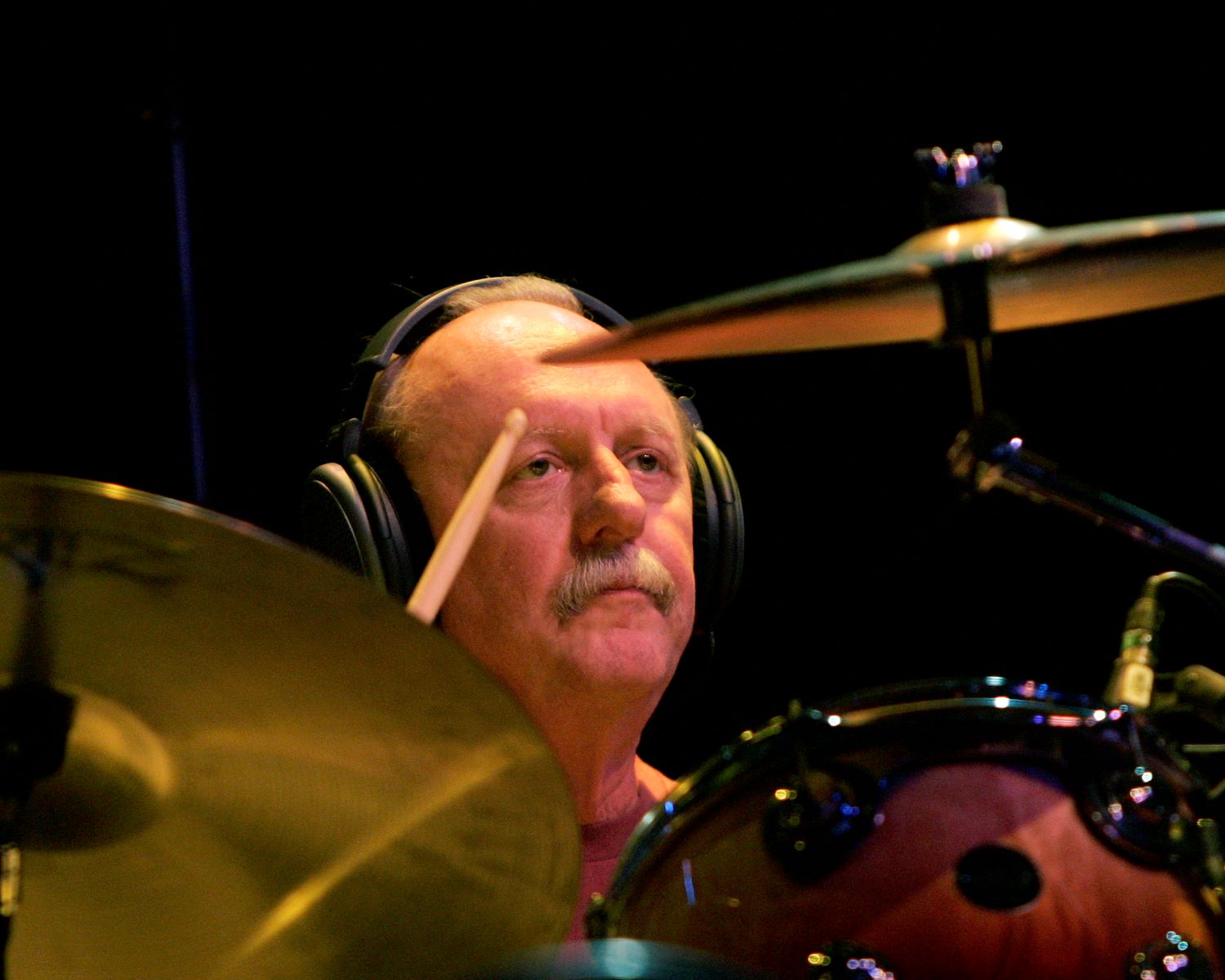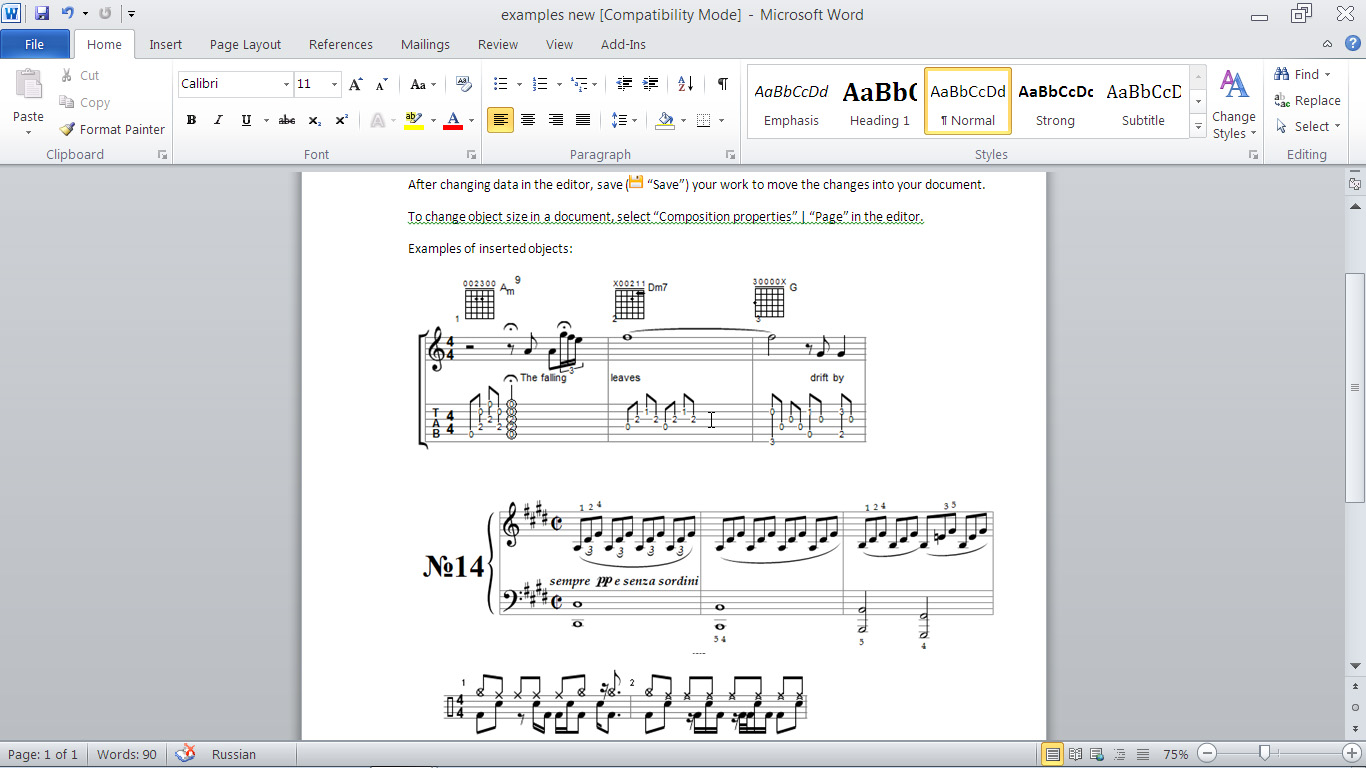Home>Instruments>Vocalist>When A Vocalist Scats What Do They Use For The Words


Vocalist
When A Vocalist Scats What Do They Use For The Words
Published: January 23, 2024
Discover the intriguing world of scatting in vocals. Uncover the secrets behind what vocalists use as alternative words while scatting.
(Many of the links in this article redirect to a specific reviewed product. Your purchase of these products through affiliate links helps to generate commission for AudioLover.com, at no extra cost. Learn more)
Table of Contents
- Introduction
- What is scat singing?
- The History of Scat Singing
- Techniques used in Scat Singing
- Improvisation in Scat Singing
- Vocalists’ Approach to Scatting
- Commonly Used Syllables in Scat Singing
- The Role of Rhythm in Scat Singing
- Scat Singing in Different Genres of Music
- Famous Scat Singers in History
- Conclusion
Introduction
Scat singing is a unique and dynamic vocal technique that has captivated audiences for decades. It is a form of vocal improvisation where singers create rhythmic patterns and melodies using nonsense syllables instead of traditional lyrics. Scat singing adds a playful and expressive element to music, allowing vocalists to showcase their creativity and virtuosity.
While scat singing is most commonly associated with jazz music, it has found its way into various genres like blues, soul, and even pop. This distinctive vocal style has been utilized by legendary vocalists such as Louis Armstrong, Ella Fitzgerald, and even modern artists like Bobby McFerrin and Kurt Elling.
In this article, we will explore the fascinating world of scat singing, delving into its history, techniques, and the role of improvisation. We will also uncover commonly used syllables in scat singing and how vocalists approach scatting. Whether you are a fan of jazz or simply curious about vocal expression, this article will provide insights into the captivating art of scat singing.
What is scat singing?
Scat singing is a vocal technique in which singers use vocal sounds, syllables, and nonsensical words to create improvised melodies and rhythms. It is a form of vocal improvisation that allows singers to showcase their creativity and musicality without relying on traditional lyrics.
Scat singing originated in the early 20th century, primarily in African American jazz music. It served as a way for instrumentalists and vocalists to engage in musical conversation and solo improvisation. The term “scat” itself is believed to have been inspired by the repetition of “doo-bop-a-doo” sounds commonly used in early scat performances.
What sets scat singing apart from other vocal techniques is its focus on rhythm and improvisation. Instead of singing actual words, scat singers use various syllables, such as “doo,” “ba,” “shoo,” “bop,” and “skiddly-bee,” to create rhythmic patterns. These syllables mimic the fast-paced and intricate melodies of instruments, allowing scat singers to join the instrumentalists in creating a lively and vibrant musical experience.
Scat singing requires a deep understanding of music theory, as vocalists must accurately match the melody and rhythms produced by the instruments. It also demands a keen sense of timing and a mastery of vocal technique to maintain fluidity and coherence throughout the improvisation.
Over the years, scat singing has evolved and expanded to other genres beyond jazz. It has found its way into blues, soul, and even contemporary pop music, adding a distinct and uplifting element to various musical styles. Today, scat singing remains a cherished art form that showcases the vocalists’ improvisational skills and musical prowess.
The History of Scat Singing
The history of scat singing traces back to the early 20th century, originating in African American jazz music. It emerged as a form of vocal improvisation that allowed singers to engage in musical conversations with instrumentalists. Scat singing provided a unique platform for vocalists to showcase their creativity and skill without relying on traditional lyrics.
The roots of scat singing can be traced back to the call-and-response style of singing in African American work songs and spirituals. These vocal traditions laid the foundation for the rhythmic and melodic experimentation that would later define scat singing.
One of the earliest recordings of scat singing can be traced back to 1926 with the release of Louis Armstrong’s song “Heebie Jeebies.” In this recording, Armstrong unintentionally dropped his music sheet and began improvising with nonsensical syllables. This spontaneous scat singing moment became an iconic and influential milestone in the history of jazz.
Scat singing gained popularity in the jazz scene during the 1930s and 1940s, with vocalists like Ella Fitzgerald, Cab Calloway, and Sarah Vaughan becoming some of the prominent figures known for their scatting abilities. Fitzgerald, in particular, became renowned for her virtuosic scat improvisations and her ability to match the instrumentalists’ solos note for note.
As jazz music expanded and evolved, so did scat singing. It began to find its way into other genres, including blues, soul, and even popular music. Artists such as Ray Charles, James Brown, and even contemporary singers like Michael Bublé and Christina Aguilera have incorporated scat singing into their performances, infusing their music with a touch of improvisation and excitement.
Scat singing continued to thrive through the decades, with contemporary jazz vocalists like Bobby McFerrin, Kurt Elling, and Esperanza Spalding pushing the boundaries of the art form. These artists brought new innovations and unique vocal stylings to scat singing, captivating audiences with their undeniable talent and improvisational skills.
Today, scat singing stands as a testament to the creativity, spontaneity, and musicality of vocalists. It is a cherished vocal technique that continues to inspire and intrigue listeners across various genres. The history of scat singing has left an indelible mark on the world of music, showcasing the power of the human voice to create captivating and expressive melodies through nuance and improvisation.
Techniques used in Scat Singing
Scat singing is a vocal technique that requires a combination of musicality, improvisation, and technical skill. Vocalists utilize a variety of techniques to create rhythmic patterns and melodic improvisations using nonsensical syllables. Here are some of the key techniques used in scat singing:
Vocal Flexibility: Scat singers must have a wide vocal range and the ability to navigate through various pitches and intervals. This flexibility allows them to seamlessly move between different notes and execute complex melodic lines with ease.
Articulation: Articulation plays a crucial role in scat singing. Vocalists use different techniques, such as staccato (short and detached), legato (smooth and connected), and glissando (sliding between notes), to add texture and variety to their scat improvisations.
Rhythmic Accuracy: Scat singers must have a strong sense of rhythm. They need to accurately mimic the rhythms played by instrumentalists and maintain a solid groove throughout their improvisation. This includes mastering syncopation, accents, and intricate rhythmic patterns.
Phrasing: Phrasing is essential in scat singing, just as it is in instrumental improvisation. Vocalists must pay attention to the placement and duration of each syllable to create melodic phrases that flow naturally and have a sense of musicality.
Call-and-Response: Call-and-response is a technique commonly found in scat singing, rooted in African American musical traditions. It involves a back-and-forth interaction between the vocalist and instrumentalists. The vocalist initiates a melodic phrase, and the instrumentalists respond with their own improvisation, creating a dynamic musical conversation.
Vocal Effects: Scat singers often incorporate vocal effects to enhance their improvisations. Techniques like vibrato, falsetto, growls, and vocal fry add color and character to the scat singing performance, providing a unique and expressive touch.
Melodic Variation: Scat singers constantly introduce melodic variations to their improvisations to keep the performance engaging and fresh. They may play with different scales, arpeggios, and melodic embellishments, adding their own unique flair to the musical conversation.
These techniques are the building blocks of scat singing, allowing vocalists to create intricate and captivating improvisations that mimic the virtuosity of instrumental solos. Mastering these techniques requires practice, a deep understanding of music theory, and a keen ear for musicality. Scat singers who excel in these techniques can captivate their audience with their creativity and skill, leaving them in awe of the vocal possibilities within the realm of scat singing.
Improvisation in Scat Singing
Improvisation is at the heart of scat singing, as vocalists create spontaneous melodies and rhythms on the spot. It is the art of composing music in the moment, allowing singers to express their creativity and musicality in a unique and personal way. Here are some key aspects of improvisation in scat singing:
Musical Spontaneity: Scat singers embrace the element of surprise in their performances. They respond to the music and the energy of the moment, allowing their instincts and musical intuition to guide their improvisations. This sense of spontaneity adds an exciting and unpredictable element to scat singing.
Reinterpreting Melodies: Scat singers often take existing melodies, from jazz standards to popular songs, and reinterpret them in their improvisations. They play with the original melody, altering the rhythm, adding embellishments, and exploring new harmonic possibilities. This reimagining of familiar tunes adds a fresh and unique dimension to scat singing performances.
Call and Response: Scat singers engage in musical conversations with instrumentalists and fellow musicians through call and response. They listen closely to the phrases and solos played by the instruments and respond with their own improvised melodies. This back-and-forth exchange creates a dynamic interplay and enhances the improvisational nature of scat singing.
Building and Developing Ideas: Scat singers develop their improvisations by building upon ideas introduced earlier in their performances. They take melodic motifs, rhythmic patterns, or even specific syllables and expand on them as they progress. This development of ideas adds coherence and structure to their improvisations, creating a sense of narrative within their scat singing performances.
Interaction with the Band: Scat singers often collaborate and interact with the instrumentalists in the band during their improvisations. They listen and respond to the musical ideas presented by the band, creating a cohesive and integrated musical experience. This interaction fosters a sense of musical connection and allows for dynamic and collaborative improvisation.
Emotional Expression: Improvisation in scat singing provides a platform for vocalists to express a range of emotions, from joy and excitement to introspection and longing. Through melodic choices, vocal inflections, and dynamic shifts, scat singers convey their emotional interpretations of the music, connecting with the audience on a deep and personal level.
Scat singing is a testament to the creativity and spontaneity of vocal artistry. It allows vocalists to break free from the constraints of traditional lyrics and explore the boundless possibilities of their voices. Through improvisation, scat singers create captivating and unique musical moments, leaving a lasting impact on both the performers and the listeners.
Vocalists’ Approach to Scatting
Scat singing requires a unique approach from vocalists. It involves a combination of technical skill, musical knowledge, and a deep understanding of the art form. Here are some key aspects of vocalists’ approach to scatting:
Musical Ear and Listening Skills: Vocalists who excel in scat singing have well-developed musical ears and strong listening skills. They must be able to hear and interpret complex musical ideas, such as chord progressions, melodic lines, and rhythmic patterns, in real-time. This allows them to mimic and respond to the music with precision and creativity.
Knowledge of Music Theory: A solid understanding of music theory is crucial for scat singers. It helps them navigate through different harmonic progressions, identify key melodic features, and recognize chord changes within a song. This knowledge allows vocalists to make informed choices and create harmonically rich and engaging improvisations.
Study of Instrumental Solos: Many scat singers draw inspiration from instrumental solos when crafting their improvisations. They study the improvisations of renowned instrumentalists, such as saxophonists or trumpeters, to incorporate the phrasing, melodic ideas, and rhythmic nuances into their scat performances. This approach adds depth and authenticity to their improvisations.
Internalization of Vocal Techniques: Scat singers spend significant time internalizing vocal techniques. This involves practicing scales, arpeggios, and various vocal exercises to develop agility, range, and control. These vocal techniques provide the foundation for executing complex melodic lines and rhythmically challenging patterns during scatting.
Transcribing and Memorizing Scat Solos: Vocalists often transcribe scat solos from recordings of legendary scat singers. By closely studying and memorizing these solos, scat singers gain insight into the subtleties, phrasing choices, and overall approach to improvisation. This meticulous study helps vocalists develop their own unique style and expand their improvisational vocabulary.
Experimentation and Creativity: Scat singers approach scatting with an adventurous and exploratory mindset. They embrace experimentation and are not afraid to take risks while improvising. This includes trying out new rhythmic patterns, melodic ideas, and vocal effects. Vocalists’ creativity allows them to push the boundaries of scat singing and create fresh and engaging performances.
Emotional Connection: Great scat singers know how to connect emotionally with the music and the audience. They infuse their improvisations with genuine expressions of joy, passion, or melancholy, captivating listeners and creating a deeper connection through their vocal performances.
Scat singing is a highly individualistic art form, and vocalists bring their own unique perspectives and approaches to this vocal technique. By combining technical proficiency, musical knowledge, and artistic creativity, scat singers create captivating and awe-inspiring performances that showcase the limitless possibilities of the human voice.
Commonly Used Syllables in Scat Singing
Scat singing is characterized by the use of nonsensical syllables to mimic the sounds and rhythms of instruments. These syllables become the language of the scat singer, allowing them to create improvised melodies and rhythms. While scat singers have the freedom to experiment with various syllables, there are some commonly used ones that have become staples in scat singing performances. Here are a few examples:
“Doo” – The syllable “doo” is one of the most frequently used syllables in scat singing. It is often used to sustain a note or to fill space between phrases. Vocalists can vary the pitch, volume, and duration of “doo” to create different effects in their improvisations.
“Ba” – The syllable “ba” is another popular choice among scat singers. It is often used to create syncopated rhythms or as a percussive element within the scatting performance. The rhythmic placement and accentuation of “ba” can add an infectious groove to the improvisation.
“Shoo” – The syllable “shoo” is commonly used to imitate the sound of a trumpet or saxophone. It is often used in upward scalar runs or as a transition between phrases. Vocalists can experiment with different vocal effects, such as vibrato or growls, while singing “shoo” to add texture and character to their improvisations.
“Bop” – The syllable “bop” is frequently used in scat singing to create rhythmic patterns and melodic variations. It can be sung in quick successions or as sustained notes, depending on the desired effect. “Bop” adds a playful and jazzy quality to the scatting performance.
“Skiddly-bee” – This phrase, often sung with a swing-like rhythm, is a classic example of scat vocalization. It is typically used in faster-paced scatting and can be extended or shortened to fit the improvisational context. “Skiddly-bee” allows scat singers to showcase their vocal dexterity and improvisational flair.
“Oh” – The syllable “oh” is used to add melodic expression and emotional depth to scatting performances. It can be sustained or sung with dynamic variations to evoke a sense of longing, joy, or excitement. “Oh” offers a versatile and expressive element to the improvisation.
“La” – The syllable “la” is often used to emphasize specific notes or to create a melodic motif within the scatting performance. It can be repeated or sung in intervals, adding a catchy and memorable element to the improvisation.
It’s important to note that these syllables are not fixed or exhaustive in scat singing. Vocalists are encouraged to experiment and create their own unique syllables based on their artistic preferences and the musical context. The use of these syllables provides a framework for scat singers to navigate through improvisations and engage in musical dialogue with the instrumentalists, creating vibrant and dynamic performances.
The Role of Rhythm in Scat Singing
Rhythm plays a fundamental role in scat singing, driving the energy and shaping the improvisations of vocalists. It is the pulse that propels the scatting performance forward and allows vocalists to connect with the underlying groove of the music. Here are some key aspects of the role of rhythm in scat singing:
Creating Groove: Rhythm is essential in establishing the groove and feel of a scatting performance. Vocalists must synchronize their rhythms with the accompanying instrumentalists to create a cohesive and infectious groove. This involves locking in with the drummer or other rhythm section players to maintain a tight and solid rhythm foundation.
Syncopation: Scat singers often utilize syncopated rhythms to add complexity and interest to their improvisations. Syncopation involves accenting and emphasizing off-beat notes, creating a sense of tension and anticipation. By playing with syncopation, scat singers can inject unexpected twists and turns into their melodic lines, captivating listeners and driving the rhythmic energy of the performance.
Rhythmic Variation: Scat singers employ rhythmic variation to enhance their improvisations. They might introduce rhythmic motifs, change the duration of notes, or experiment with different rhythmic patterns. This variation adds texture and dynamics to their performances, ensuring that the improvisations remain engaging and captivating.
Interplay with Instrumentalists: Rhythm serves as a common language for scat singers to interact with instrumentalists. It allows for a musical dialogue and exchange, with the vocalists and instrumentalists responding and playing off each other’s rhythmic ideas. Through this interplay, scat singers and instrumentalists create a cohesive and cohesive musical journey.
Rhythmic Articulation: Scat singers use articulation techniques to add nuance and expression to their rhythmic delivery. They may employ techniques such as articulating crisply with staccato notes or flowing smoothly with legato phrases. These articulation choices help to shape the rhythmic patterns and convey the desired musical intention.
Rhythmic Improvisation: Improvisation in scat singing extends beyond melodic exploration; it also includes rhythmic improvisation. Scat singers have the freedom to experiment with different rhythmic ideas, exploring intricate patterns or introducing unexpected rhythmic accents. This creativity adds an element of surprise and innovation to their performances.
Polyrhythms and Cross-rhythms: Scat singers often engage in complex polyrhythms and cross-rhythms, where multiple rhythms are played simultaneously. This can involve singing one rhythmic pattern against another, creating an intricate and mesmerizing rhythmic tapestry. This advanced rhythmic technique demonstrates the skill and musicality of scat singers.
Rhythm is the backbone of scat singing, providing the foundation for vocal improvisation and adding an infectious energy to performances. It allows scat singers to connect with the music and instrumentalists, showcasing their rhythmic prowess and creating dynamic and engaging musical experiences.
Scat Singing in Different Genres of Music
While scat singing is most commonly associated with jazz music, its influence has transcended genre boundaries and found its way into various styles of music. Here are some examples of how scat singing has been incorporated into different genres:
Jazz: Jazz is the genre most closely associated with scat singing. It has been a prominent feature of jazz vocal performances since its inception. Pioneering scat singers like Louis Armstrong and Ella Fitzgerald helped popularize scat singing in jazz, showcasing the technique’s expressive and improvisational qualities. Today, scat singing remains a cherished art form within the jazz genre, with vocalists like Kurt Elling and Dee Dee Bridgewater carrying on the scatting tradition.
Blues and Soul: Scat singing has also made its mark in blues and soul music. Artists like Ray Charles and Nina Simone incorporated scatting into their performances, infusing their soulful vocals with elements of improvisation. Scat singing adds an extra layer of emotion and musicality to these genres, allowing vocalists to express themselves in a unique and captivating way.
Funk and R&B: In funk and R&B music, scat singing often takes on a rhythmic and percussive role. Artists such as James Brown and Stevie Wonder have utilized scat singing as a way to add groove and energy to their songs. Scatting in these genres often involves syncopated rhythms and the use of vocal percussive sounds to complement the instrumental arrangements.
Pop and Rock: Though less common than in jazz or soul, scat singing has found its way into pop and rock music as well. Artists such as Michael Jackson and Mariah Carey have incorporated scatting into their songs, adding a touch of improvisation and vocal virtuosity. In the rock genre, scat singing has been used by bands like Queen, with Freddie Mercury’s iconic scat-inspired vocal sections in songs like “Bohemian Rhapsody.”
World Music: Scat singing has also been embraced in various world music traditions. In Latin jazz, scatting takes on a lively and rhythmic character, with vocalists incorporating syllables such as “baba” or “díganme” to complement the vibrant rhythms of Latin music. In African music, scatting is reminiscent of call-and-response vocal patterns, adding a communal and improvisational element to the performances.
Scat singing’s adaptability and versatility have allowed it to permeate different musical genres, adding a distinct and dynamic quality to each. Whether in jazz, blues, soul, funk, pop, rock, or world music, scat singing adds a touch of improvisation, virtuosity, and vocal expression, enhancing the overall musical experience for both artists and audiences.
Famous Scat Singers in History
Throughout the history of music, numerous scat singers have left an indelible mark on the art form with their unique vocal stylings and improvisational abilities. These artists have pushed the boundaries of scat singing, captivating audiences with their skill, creativity, and expressive performances. Here are a few of the most famous scat singers in history:
Louis Armstrong: Known as the “Father of Scat Singing,” Louis Armstrong played a significant role in popularizing scat singing in the 1920s. His recording of “Heebie Jeebies” in 1926, featuring an inadvertent scat improvisation, became an iconic moment in jazz history.
Ella Fitzgerald: One of the greatest jazz vocalists of all time, Ella Fitzgerald was renowned for her impeccable scat singing abilities. Her scat solos, such as the famous recording of “How High the Moon,” displayed her virtuosic command of rhythm, melody, and improvisation.
Jon Hendricks: Jon Hendricks was a jazz vocalist and lyricist who played a pivotal role in popularizing vocalese, a style of setting lyrics to existing instrumental jazz solos. His scat singing and intricate lyrics earned him acclaim and accolades throughout his career.
Scatman John: Scatman John was an artist who brought scat singing into the realm of pop music in the 1990s with his hit single “Scatman (Ski-Ba-Bop-Ba-Dop-Bop).” He combined scatting with positive messages, encouraging unity and self-acceptance.
Al Jarreau: Al Jarreau was a versatile vocalist who incorporated scat singing into his performances across various genres, including jazz, R&B, and pop. His scatting skills, showcased in songs like “Spain” and “Roof Garden,” demonstrated his exceptional vocal agility and musicality.
Bobby McFerrin: Bobby McFerrin revolutionized scat singing with his vocal versatility and experimental approach. His improvisational skills and ability to create polyphonic textures with his voice earned him widespread acclaim, especially with his global hit “Don’t Worry, Be Happy.”
Kurt Elling: Kurt Elling is a contemporary jazz vocalist known for his innovative scatting and lyrical interpretations. His albums, such as “Dedicated to You” and “The Messenger,” showcase his artistry and demonstrate his mastery of vocal improvisation.
Dee Dee Bridgewater: Dee Dee Bridgewater is a Grammy Award-winning jazz vocalist who has embraced scat singing throughout her career. Her powerful voice, combined with her dynamic scat solos, has solidified her status as one of the great scat singers of our time.
These are just a few examples of the many scat singers who have made significant contributions to the art form. Each of these artists has left an enduring legacy, inspiring future generations of scat singers and demonstrating the transformative power of vocal improvisation.
Conclusion
Scat singing is a captivating vocal technique that allows vocalists to harness their improvisational skills, musicality, and creativity. Throughout history, scat singing has evolved from its roots in jazz and found its way into various genres, leaving a lasting impact on the world of music. It is a unique form of vocal expression that allows singers to create rhythmic patterns, melodic improvisations, and engage in musical conversations with instrumentalists.
The role of rhythm in scat singing is fundamental, providing the foundation for vocalists to establish groove, syncopation, and rhythmic variation in their improvisations. Vocalists approach scatting with a combination of technical proficiency, a deep understanding of music theory, and their own artistic inclinations.
Scat singers utilize a wide range of syllables, such as “doo,” “ba,” and “shoo,” to create rhythmic and melodic patterns that imitate the sounds and energy of instruments. They also draw inspiration from jazz greats like Louis Armstrong and Ella Fitzgerald, as well as contemporary artists like Bobby McFerrin and Kurt Elling, who have continued to push the boundaries of scat singing.
Scat singing transcends genre boundaries, finding its way into jazz, blues, soul, funk, pop, rock, and world music. Vocalists in these genres have incorporated scatting to add dynamics, improvisation, and a unique vocal element to their performances.
In conclusion, scat singing is a dynamic and expressive vocal technique that allows artists to showcase their musicality, improvisational skills, and emotional connection to the music. As scat singers continue to push the boundaries of the art form, they create memorable and enchanting performances that captivate audiences and leave a lasting impact on the history of music.











